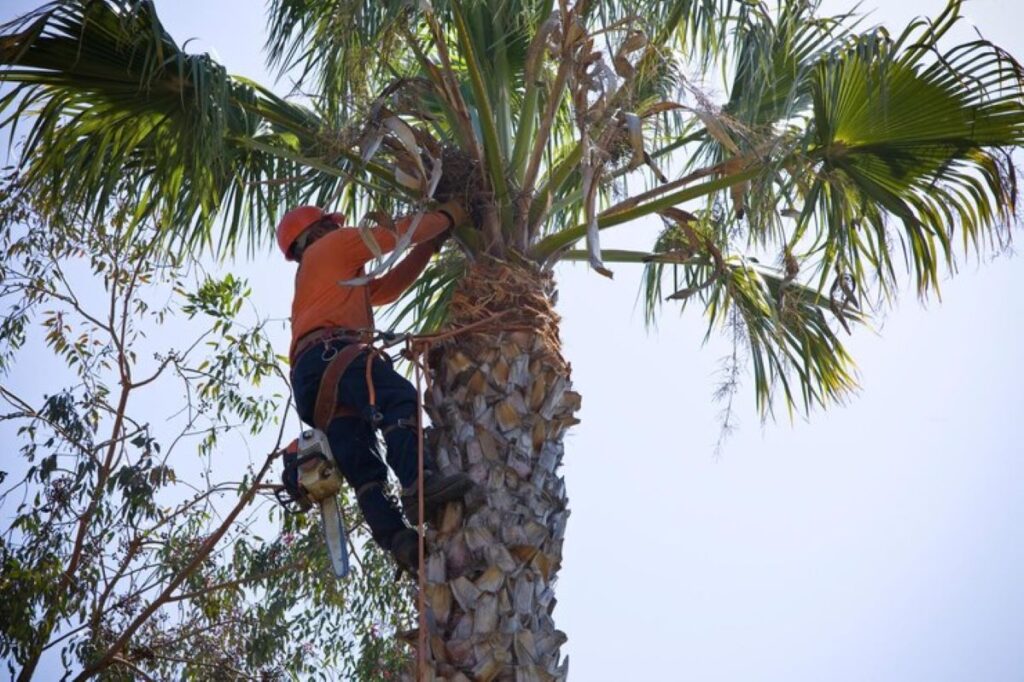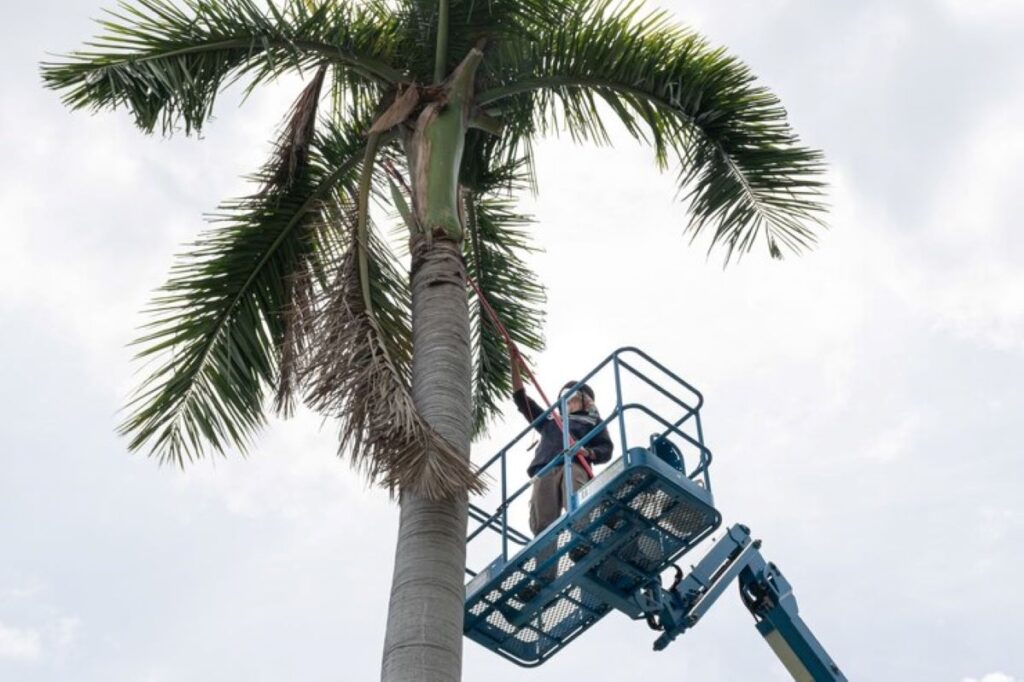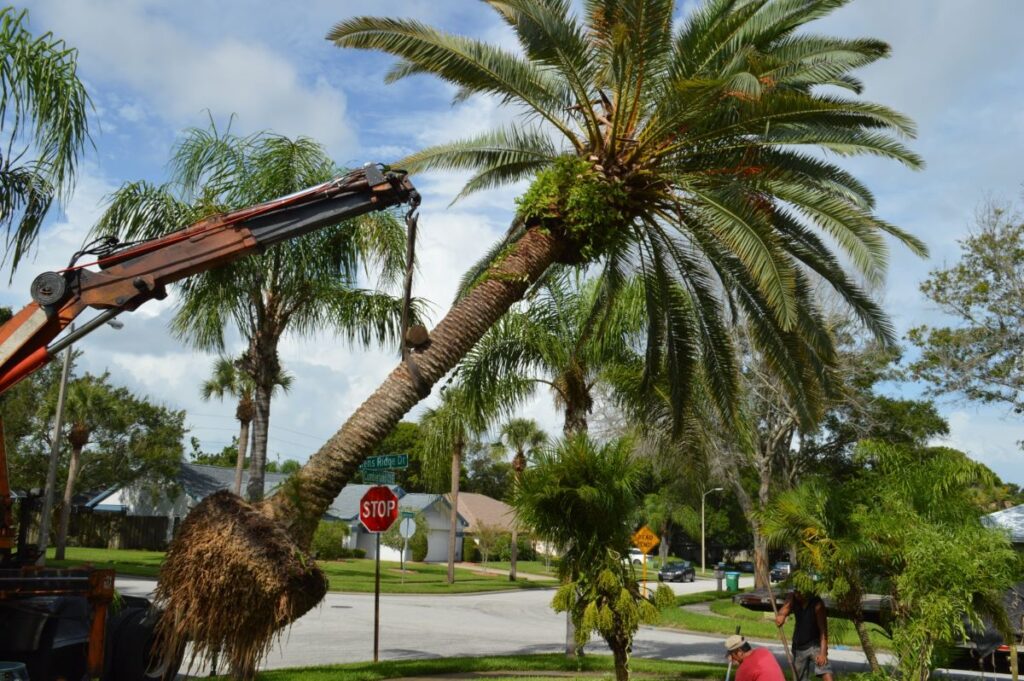Palm trees are a stunning addition to any garden, bringing a touch of the tropics to your outdoor space. However, maintaining their health and appearance requires regular pruning. Not only does proper pruning enhance the aesthetic appeal of your garden, but it also ensures the safety of your surroundings. This article provides essential tips for effectively pruning palm trees, ensuring a clean and safe garden environment.
Understanding the Importance of Pruning
Palm tree pruning is not merely about aesthetics; it plays a crucial role in the overall health of the tree. Regular maintenance helps to remove dead or dying fronds, which can harbour pests and diseases. Additionally, pruning can encourage new growth and improve air circulation, promoting a healthier tree. The practice of pruning also allows for better sunlight penetration, which is essential for the photosynthesis process, ultimately leading to a more vibrant and robust palm. Furthermore, by shaping the tree appropriately, you can enhance its natural beauty, allowing it to complement your landscape design more effectively.
Health Benefits
Healthy palm trees are less susceptible to diseases and infestations. By removing dead or damaged fronds, you reduce the risk of pests taking up residence in your trees. This proactive approach can save you time and money in the long run, as it prevents more significant issues from developing. Moreover, regular pruning can stimulate the growth of new, healthy fronds that not only improve the tree’s appearance but also its resilience against environmental stressors such as drought or extreme temperatures. In essence, a well-pruned palm tree is not just a sight to behold; it is a testament to the care and attention it receives, ultimately leading to a more sustainable ecosystem in your garden.
Safety Considerations
Overgrown palm trees can pose safety hazards, particularly during storms or high winds. Dead fronds can fall and cause injury or damage to property. Regular pruning ensures that your palm trees remain safe and well-maintained, reducing the risk of accidents in your garden. Additionally, by keeping the canopy of the palm tree well-trimmed, you can prevent it from obstructing visibility or interfering with power lines, which is particularly important in urban areas. It is also worth noting that certain species of palm trees can grow quite tall, making it essential to use proper equipment and techniques during pruning to avoid accidents. Engaging a professional arborist can be beneficial, as they possess the expertise to handle the task safely and effectively, ensuring that your palms remain not only beautiful but also secure for all who enjoy your outdoor space.
When to Prune Your Palm Trees
Timing is essential when it comes to pruning palm trees. The best time to prune is typically during the growing season, which varies depending on the species and local climate conditions. In Australia, this often falls between late spring and early autumn.
Seasonal Considerations
Pruning during the growing season allows the tree to recover more quickly from the cuts. Avoid pruning in the winter months, as this can stress the tree and make it more vulnerable to disease. Additionally, consider the specific type of palm tree you are working with, as some species may have unique requirements.
Signs That It’s Time to Prune
Look for specific signs that indicate it’s time to prune your palm trees. Yellowing or browning fronds are a clear indication that the frond is dying and should be removed. Additionally, if the tree appears to be overgrown or has fronds that are obstructing pathways or structures, it’s time to take action.
Tools and Equipment for Pruning
Having the right tools is essential for effective and safe pruning. The right equipment not only makes the job easier but also ensures that the cuts are clean and precise, promoting better healing for the tree.
Essential Tools
Invest in high-quality pruning shears, loppers, and a saw for larger fronds. Sharp blades are crucial for making clean cuts, which help prevent damage to the tree. Additionally, consider using safety gear such as gloves and goggles to protect yourself during the pruning process.
Maintenance of Tools
Regularly maintain your tools to ensure they remain effective. Clean the blades after each use to prevent the spread of diseases between trees. Sharpen the blades regularly to ensure clean cuts, and oil moving parts to keep them functioning smoothly.
Pruning Techniques for Palm Trees
Understanding the correct techniques for pruning palm trees is vital for achieving the best results. Improper pruning can lead to damage and may even harm the tree’s growth.
Removing Dead Fronds
When pruning, always start by removing dead or dying fronds. Cut them as close to the trunk as possible without damaging the trunk itself. This not only improves the appearance of the tree but also allows for better air circulation and light penetration.
Trimming Live Fronds
While it might be tempting to remove live fronds for aesthetic purposes, it’s essential to be cautious. Only trim live fronds if they are obstructing pathways or structures. Ideally, leave at least one or two green fronds on the tree to ensure it continues to thrive. This helps maintain the tree’s health and encourages new growth.
Shaping the Tree
Shaping is another important aspect of pruning. Aim for a balanced look by ensuring the fronds are evenly distributed around the trunk. This not only enhances the visual appeal but also helps the tree maintain its structural integrity.

Common Mistakes to Avoid
Even experienced gardeners can make mistakes when it comes to pruning palm trees. Being aware of common pitfalls can help ensure that your pruning efforts are successful.
Over-Pruning
One of the most common mistakes is over-pruning. Removing too many fronds can stress the tree and hinder its growth. Always prioritise the health of the tree over aesthetics. Remember, less is often more when it comes to pruning.
Ignoring Tree Type
Different species of palm trees have varying needs when it comes to pruning. Ignoring these specific requirements can lead to poor results. Research the type of palm tree you have to understand its unique pruning needs and best practices.
Post-Pruning Care
After pruning, it’s essential to care for your palm tree to ensure it recovers well. Proper post-pruning care can significantly impact the tree’s health and growth.
Watering and Fertilising
Ensure your palm tree receives adequate water after pruning, as this helps to support new growth. Additionally, consider applying a balanced fertiliser to provide essential nutrients. This can help the tree recover more quickly and promote healthy growth.
Monitoring for Pests and Diseases
After pruning, keep a close eye on your palm tree for any signs of pests or diseases. Early detection is key to managing any potential issues. Regularly inspect the fronds and trunk for abnormalities, and take action promptly if any problems arise. Visit https://billpearnmasonry.com/residential-hedge-trimming-services-for-perfect-boundaries/ to check out more about residential hedge trimming services for perfect boundaries.
Professional Help: When to Call in the Experts
While many homeowners can manage basic pruning tasks, there are times when it’s best to call in professionals. Knowing when to seek expert help can save time and ensure the health of your palm trees.
Complex Pruning Tasks
If your palm trees are particularly large or have complex growth patterns, it may be wise to hire a professional. They have the experience and equipment to handle challenging pruning tasks safely and effectively. This is especially important for trees that are close to structures or power lines.
Health Issues
If you notice signs of disease or pest infestations that you cannot manage on your own, it’s time to consult a professional. They can provide targeted treatments and advice to restore your palm trees to health.

Conclusion
Pruning palm trees is an essential aspect of maintaining a clean and safe garden. By understanding the importance of pruning, knowing when to prune, and employing the correct techniques, you can ensure your palm trees remain healthy and visually appealing. Regular maintenance not only enhances the beauty of your garden but also promotes safety and longevity for your palm trees.
Whether you choose to tackle the task yourself or enlist the help of professionals, effective pruning will undoubtedly contribute to a stunning and safe outdoor space. With these tips in mind, your palm trees will flourish, providing joy and beauty for years to come.

